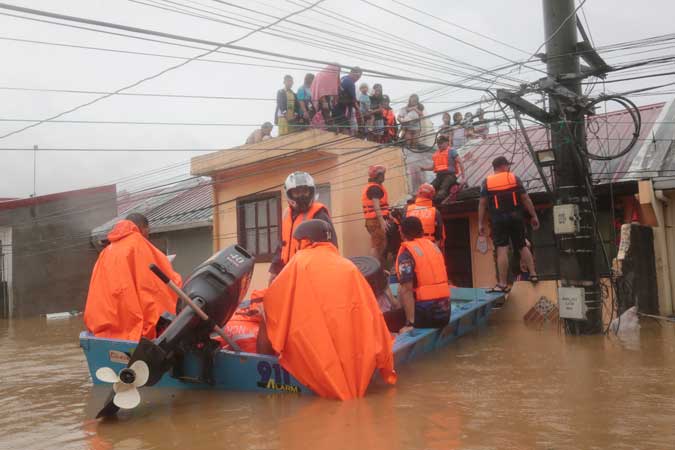
PRESIDENT Rodrigo R. Duterte on Tuesday night placed Luzon island under a state of calamity after it was battered by typhoons in the past three weeks, the last one of which caused some serious flooding.
The President said at a televised briefing he had approved the recommendation of the local disaster agency to sign a proclamation for the purpose. This will give local governments easier access to calamity funds.
Typhoon Vamco, the 21st typhoon to hit the country this year, brought rainfall ranging from 271 millimeters to 356 millimeters, far below the 455 millimeters of rainfall brought by Tropical Storm Ketsana, locally named Ondoy, in 2009.
But it submerged some parts of Luzon, with some lawmakers blaming the release of water from major dams for the floods.
Vamco, locally named Ulysses, was the fifth typhoon to hit the country in less than three weeks, killing at least 73 people after submerging many parts of Luzon island and leaving half-a-million people without electricity.
The storm made landfall in Quezon province on Nov. 11 and crossed Central Luzon, according to the local weather bureau. It weakened into a severe tropical storm over the South China Sea, but strengthened into a typhoon just as it left the Philippine area of responsibility.
Mr. Duterte issued the proclamation days after he flew to the Cagayan Valley region, where many were forced to go to their rooftops to escape the floods.
Meanwhile, private think tank Stratbase ADRi urged the government to fast-track the expansion of free internet networks to help save more lives during disasters.
“The extensive connectivity that has been provided by mobile telecommunication services and social media has greatly prevented casualties in disasters such as the recent string of strong typhoons that have ravaged the country,” Victor Andres Manhit, president of the think tank, said in a statement.
He said free access to alert systems both through mobile networks and social media also allows agencies and groups to coordinate disaster relief, issue calls for assistance and monitor rescue operations.
“As almost every household has a mobile phone, it is crucial that there is both government and private sector investment in strengthening and expanding the country’s digital infrastructure,” Mr. Manhit said. “This would give a strategic advantage in addressing the risks brought by the frequent natural calamities the country faces.” — G.M. Cortez
